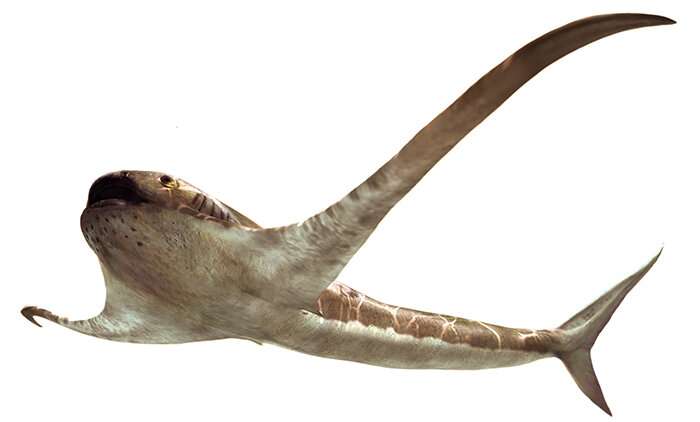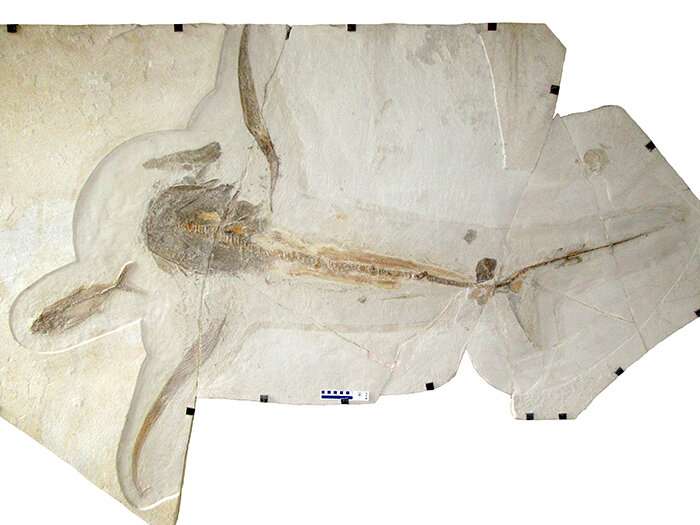The 'eagle shark' that glided through ancient seas

Scientists have discovered a new species of ancient winged shark, which fed on plankton eons before the emergence of giant manta rays, according to new research published Thursday.
The species, Aquilolamna milarcae, which lived around 93 million years ago, was discovered in the north east of Mexico.
The specimen in question measured around 1.65 metres (5.4 feet) in length and has a fin span of 1.9 metres (6.3 feet).
Like modern-day rays, the species, nicknamed "eagle shark", had extremely long pectoral fins reminiscent of wings.
Authors of the study, published in the journal Science, said the "bizarre" creature probably swam very slowly and was unlikely to have been able to hunt for food.
"You could make the analogy of a glider... it wasn't at all adapted to swimming fast and following prey," said Roman Vullo, lead study author from France's National Centre for Scientific Research and the University of Rennes.
Coupled with a large head and no teeth found on the skeleton—suggesting they were very small or missing entirely—Vullo said "it was more a plankton eater than predator".
Until the discovery, scientists had only known of one category of large plankton feeders in the Cretaceous period, a group of large bony fish known as pachycormidae.

The eagle shark is now the second known plankton eating fish discovered from the last epoch when dinosaurs still stalked the Earth.
Pachycormidae died out in the extinction event following the Chicxulub meteor strike 66 million years ago.
"Eagle sharks were little by little replaced by manta rays and devil rays, which developed at the beginning of the Tertiary period" after the extinction, Vullo told AFP.
The specimen in the study was found in 2012 in the Mexican region of Vallecillo, which is renowned for its well preserved fossils.
More information: R. Vullo at Univ Rennes in Rennes, France el al., "Manta-like planktivorous sharks in Late Cretaceous oceans," Science (2021). science.sciencemag.org/cgi/doi … 1126/science.abc1490
Journal information: Science
© 2021 AFP




















